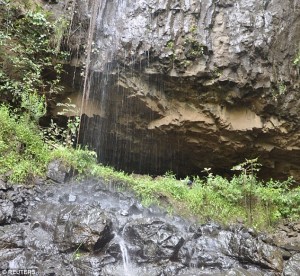Cave find shows ancient migration back into Africa
DNA from a recently discovered a skeleton in Ethiopia has revealed a massive human migration from Eurasia back into Africa roughly 3,500 years ago. Modern humans, Homo sapiens, emerged in Africa around 200,000 years ago, before populating nearly every corner of the planet – between 60,000 and 100,000 years ago. Proof of these travels can be found in the genomes – or genetic signatures – of people living today.
Now, the Ethiopian find which has been dated to be about 4,500 years old, shows that humans migrated en masse back into Africa three and half millennia ago.
The study’s senior author Dr. Andrea Manica, from the University of Cambridge’s Department of Zoology, in the UK, said that the wave of West Eurasian migration back into the Horn of Africa could have been as much as 30% of the population that already lived there.
The findings were underpinned by an important discovering in 2011 in which archaeologists working with Gamo tribesman in the highlands of southwest Ethiopia discovered Mota Cave – 14 metres wide and 9 metres high – overlooking a nearby river.
A year later, they excavated a burial of an adult male, his body extended and hands folded below his chin.
Researchers, using new techniques, were able to source DNA from the man’s skeleton.
For this recent study, researchers set out to compare the recently mapped ancient genome with samples from the modern genome.
They found that as much as 25% cent of African DNA was the result of interbreeding with Western Eurasians. This was not consistent throughout the continent as some DNA to the south and far west may have only shown a 5% trace of interbreeding.
The man’s genome is, unsurprisingly, more closely related to present-day Ethiopian highlanders known as the Ari than to any other population the team examined, suggesting a clear line of descent for the Ari from ancient human populations living in the area.
But further genetic studies show that the Ari also descend from people that lived outside Africa, which resonates with a previous study that discovered a backflow of humans into Africa from Eurasia around 3,000 years ago.
Using genetic evidence from Eurasian ancient genomes and present-day populations, the researchers determined that the migrant ancestors of the Ari were closely related to early farmers who moved into Europe from the Near East around 9,000 years ago.
Co-author Marcos Gallego Llorente, an evolutionary geneticist at the University of Cambridge, suggests that Middle Eastern farmers later moved south to Africa, bringing new crops to the continent such as wheat, barley and lentils.
The team also found vestiges of these migrants’ DNA in people all across sub-Saharan Africa — probably carried by later migrations, such as the expansion of Bantu-speaking groups from West Africa to other parts of the continent around 1,000 years ago.
Jess Phillips
AMES Australia Staff Writer













